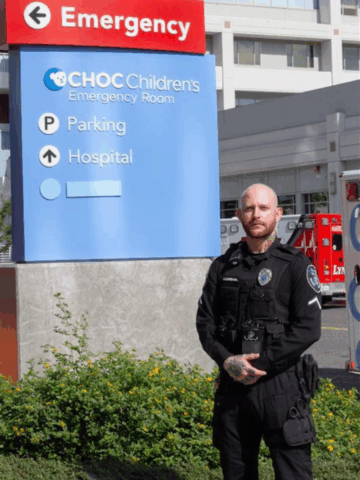CHOC research into a 2016 bacterial infection outbreak at an Orange County dental clinic has helped spur the Centers for Disease Control and Prevention (CDC) to issue a health alert emphasizing the importance of maintaining and monitoring safe dental waterlines.
The work of Dr. Jasjit Singh, CHOC’s medical epidemiologist and medical director of infection prevention and control, and a team of CHOC colleagues was cited as a primary reason for the Oct. 31, 2022 Health Alert Network (HAN) Health Advisory, the highest-level advisory issued by the CDC.
The CDC’s top reference for the HAN alert was a paper written by Dr. Singh and CHOC colleagues that was published on April 15, 2021, Invasive Mycobacterium abscessus Outbreak at a Pediatric Dental Clinic – PubMed (nih.gov).
In the paper, Dr. Singh and colleagues detailed oral infections traced to a Mycobacterium abscessus infection that was detected after pediatric patients of the clinic, which is not affiliated with CHOC, underwent a pulpotomy, or “baby root canal,” to remove or treat an infected tooth.
Over 100 children were admitted to CHOC for evaluation, of whom 70 were confirmed to have infections. The children with infections were hospitalized for an average of more than a week and some suffered permanent tooth loss – as many as six teeth.
The outbreak turned out to be the largest ever of invasive Mycobacterium abscessus infections associated with a dental practice. The commonly occurring M. abscessus bacteria is found in water, dust, and soil, but it’s an uncommon cause of healthcare-associated infection.
At CHOC, 27 of the most severely affected children were treated with a complex regimen of antibiotics, including clofazimine, marking the largest number of children to ever receive that medication outside of treatment for leprosy.
The California Department of Public Health, the CDC, and the Dental Board of California worked with the Orange County Health Care Agency (OCHCA) to investigate the infections.
Untreated water to blame
The infections were caused by untreated municipal water the dental clinic was using for drilling and irrigation during pulpotomy procedures. Because pulpotomies are not considered surgical procedure, sterile water is not required.
The work of Dr. Singh and her colleagues led to a change in water standards for pediatric dental procedures in California. In September 2018, the governor signed into law a bill that specified as unprofessional conduct the use of water that is not sterile or that does not contain recognized disinfecting or antibacterial properties when performing dental procedures on exposed dental pulp.
The CDC’s alert emphasizes the importance of following existing recommendations for maintaining and monitoring dental waterlines.
In addition to the research conducted at CHOC, the CDC cited a 2015 outbreak of 24 cases of infections in children receiving pulpotomy treatments from a pediatric dental clinic in Georgia. Investigators from the Georgia Department of Public Health found that municipal water was used during dental procedures, the clinic was not using a disinfectant in their dental unit waterlines, and the clinic was not regularly monitoring the water quality as recommended by the CDC.
The CDC also said it was alerted in March 2022 about a new cluster of suspected bacterial infections in children following dental procedures at an unnamed pediatric dental clinic. Investigation into this cluster is currently ongoing, the CDC said, and preliminary site visit data indicates that dental unit waterline testing results showed microbial counts much higher than the level recommended by the CDC.
Dr. Singh said it’s gratifying that CHOC research has helped lead to a national health advisory.
“I speak for the entire team who worked on this outbreak: We never want to see another child and their family go through what was experienced in 2016,” Dr. Singh said. “We’re glad that the CDC has recognized the problem and issued this Health Alert.”




